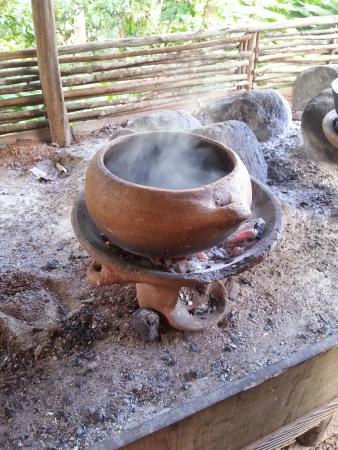
Allow me to set the stage…
Firstly, let’s get this out of the way, “Stories on this site are works of fiction. Unless otherwise indicated, all the names, characters, businesses, places, events and incidents on this website are either the product of the author’s imagination or used in a fictitious manner. Any resemblance to actual persons, living or dead, or actual events is purely coincidental.” When you want to return to the home page, just click the huge “The Lure” on the top. That’s your home button. Welcome!
Now, let’s get started. According to Patricia J. Fay, Associate Professor of Art, Florida Gulf CoastUniversity, there’s more to the Caribbean
In fact, the genetic origins of Caribbean people stem from just about every corner of the entire globe. Caribbean people’s ancestry have included indigenous and migratory Amerindian peoples; European conquerors, merchants, and settlers; runaway slaves from China; African slaves from diverse tribes across the continent; African business men; indentured plantation workers from India.

Coal pot and canawi 
Rastafarian Potter 
Baking pottery
As discussed in her article, Ms. Fay states, “The functional clay vessels created in the labor communities of the Caribbean are a powerful reminder of the core purpose of the ceramic enterprise: to facilitate the health and sustenance of human society. Before the recent introduction of metal and plastic kitchenware, clay pottery in the Caribbean served as the principal mechanism for the domestic tasks of storage, cooking, and serving needs. Fine European china and status dinnerware were imported for plantation kitchens and tables, but many of the ceramic pots for cooking and storage were formed and fired using the abundant earthenware clays of the region. Dinnerware made locally for personal use mimicked the forms and even the names of the imported kitchen and table wares, and the use of unglazed earthenware pottery in the home continued in many locations to within living memory.”
Fay’s description of Caribbean pottery included looking specifically at contemporary pottery production, closely related African-based traditions can be recognized in the technologies employed by women potters on the islands of St. Lucia, Antigua, Jamaica, and Nevis. These women work entirely with local materials, build utilitarian vessel forms by hand using a soft coil technique, and fire the unglazed wares in open bonfires. In the summer of 2000 I was able to visit the West African country of Cote d’Ivoire for a month-long exploration of traditional craft practices, including demonstrations at several pottery villages. Direct observations of the clay processing, handbuilding, and firing practices used by the women potters clearly indicated strong similarities to specific techniques used by potters in the Caribbean. And while the argument can be made that comparable methods are employed in many ceramic settings worldwide, at times the hand and body movements of the African potters (not to mention the familiar sound of ‘sucking the teeth’ for emphasis) were simply identical. In particular, watching the pounding of the wet clay prior to use with a wide-based wooden pestle convinced me that heritage practices can be retained within the physical memory of the human body, and have been transmitted from mother to daughter across time and space.
I can assure from experience that any food cooked in these earthen ware produce a taste unlike anything your palate has ever experienced.
If you are ever in the Caribbean vacating, as unlikely as that may seem right now, make it a point to indulge in this most unique natural tool that creates the most tongue-tantalizing culinary delights.






Comments
Hi, this is a comment.
To get started with moderating, editing, and deleting comments, please visit the Comments screen in the dashboard.
Commenter avatars come from Gravatar.
Your point of view caught my eye and was very interesting. Thanks. I have a question for you.
I am sorting out relevant information about gate io recently, and I saw your article, and your creative ideas are of great help to me. However, I have doubts about some creative issues, can you answer them for me? I will continue to pay attention to your reply. Thanks.
I am sorting out relevant information about gate io recently, and I saw your article, and your creative ideas are of great help to me. However, I have doubts about some creative issues, can you answer them for me? I will continue to pay attention to your reply. Thanks.
Thank you for your sharing. I am worried that I lack creative ideas. It is your article that makes me full of hope. Thank you. But, I have a question, can you help me? https://www.binance.com/pt-BR/register?ref=DB40ITMB
Your article helped me a lot, is there any more related content? Thanks! https://www.binance.com/sl/register?ref=S5H7X3LP
Thank you for the kind words.
Here’s my other blog: https://asklioness.com/ask-lioness-blog/